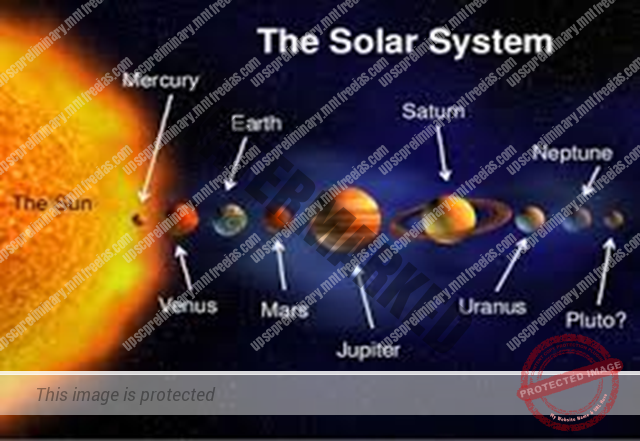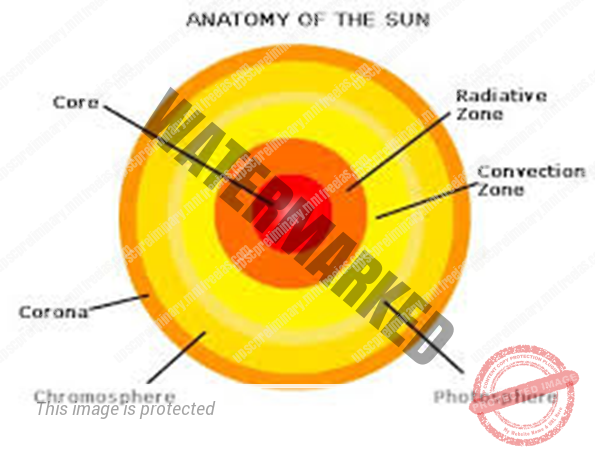- ORIGIN OF UNIVERSE
- BIG BANG THEORY
- GALAXY
- STAR AND CONSTELLATIONS
- BLACK HOLE
- SOLAR SYSTEM
- THE SUN
UNIT 1 – UNIVERSE – PART 1
CHAPTER 1: UNIVERSE
The universe is a vast endless space which includes galaxies, stars, planets and other forms of matter and energy in it.
ORIGIN OF UNIVERSE:
- BIG BANG THEORY :-
The most popular argument regarding the origin of the universe is the Big Bang Theory. It is also called expanding universe hypothesis.
In 1927, Abbe Georges Lemaitre, a Belgian astronomer was the first to propose, a theory on the origin of the universe. It was Edwin Hubble who provided the evidence that the universe is expanding
It was called, ‘the Big Bang Theory’. According to it, the universe was formed about 13.75 billion years ago. In the beginning, all matter forming the universe existed in one place in the form of tiny ball (singular atom).
At the big bang, the tiny ball exploded violently. It led to huge expansion and temperature dropped to 4500K and gave rise to atomic matter. The universe became transparent.
HOYLE’S CONCEPT OF STEADY STATE: –
It considered the universe to be roughly the same at any point of time. It did not have a beginning and did not have an end. However, with evidence available about the expanding universe, scientific community favours the argument of expanding universe.
NEBULAR HYPOTHESIS:
One of the earlier and popular arguments of the earth’s origin was by a German professor Immanuel Kant. Mathematician Laplace revised it in 1796. It was known as Nebular Hypothesis. It considered that planets were formed out of a cloud of material associated with a youthful sun, which was slowly rotating.
Galaxy:
A galaxy is a system of billions of stars, stellar remnants, interstellar gas, dust, and dark matter. The Milky Way is the galaxy that contains our Solar System.
UNITS OF MEASURING DISTANCE IN THE UNIVERSE:
- Astronomical unit (AU)
It is defined as the mean distance from the earth to sun.
1AU =1.5 X 10^8 kms.
- LIGHT YEAR
It is the distance travelled by light in one year. Light year =9.46X 10^12kms.
3) PARSEC
It is a unit of length used to measure the astronomically large distances between objects beyond our solar system. one parsec is the distance at which one astronomical unit subtends an angle of one arc second.
1Parsec =3.26 light years.
STAR AND CONSTELLATIONS:
STAR
Star is a type of astronomical object which has its own light and heat. The nearest star to the earth is sun. Proxima centuari is the closest star to the sun; stars are made up of vast clouds of hydrogen gas, some helium and dust.
In ancient times, people used to determine directions during the night with the help of stars. The North Star indicates the north direction. It is also called the Pole Star. Some astronomical objects do not have their own heat and light. They are lit by the light of the stars. Such bodies are called planets.
CONSTELLATION: –
Constellation is the group of stars that forms a particular shape in the sky.
Ursa Major is a constellation that can be seen in the northern hemisphere.
BLACK HOLE
A black hole is an object with such a strong gravitational field that even light cannot escape from its surface. A black hole may be formed when a massive object undergoes uncontrolled contraction because of the inward pull of its own gravity.
SOLAR SYSTEM
A solar system consists of a sun at the centre and the eight planets, moons, asteroids, comets, and meteoroids that revolve it. The eight planets, namely the Mercury, Venus, Earth, Mars, Jupiter, Saturn, Uranus, and Neptune.
These planets revolve around the sun in fixed elliptical path known as ‘orbits’. The solar system is believed to have been formed about 4.6 billion years ago. The solar system also includes the Kuiper Belt that lies past Neptune’s orbit. Of the eight planets, Mercury and Venus are the only planets with no satellites while the Jupiter and Saturn have the highest number of satellites in our solar system.
THE SUN
The sun is in the centre of the solar system. It is huge and made up of extremely hot gases. It provides the pulling force that binds the solar system. The sun is the ultimate source of heat and light for the solar system. But that tremendous heat is not felt so much by us because despite being our nearest star, it is far away from us. The sun is about 150 million km away from the earth and light travelling at the speed of 3X10^5 km per second and takes about 8 min and 20 sec to reach the earth surface.
You Can show the below one in a better pic or video. google as Anatomy of sun.


